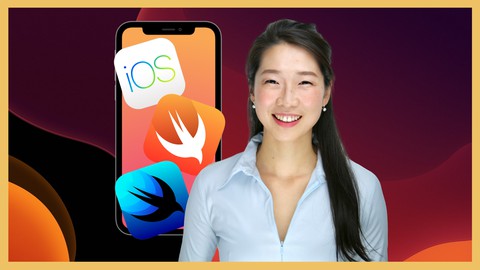Set Action Listener Programmatically in Swift
Setting an action listener is a great way to capture user interaction on one of your views.
However, in Swift, you add a target to do this behavior.
Here is an example for a UIButton:
myButton.addTarget(self, action: #selector(buttonClicked), for: .touchUpInside)The first parameter is the target object, typically self.
The second parameter is the action. Here we use the selector (method signature) button clicked.
The last parameter is the control event. Most of the times for buttons, I will use the control event .touchUpInside.
Now for the method, we can write something like this:
@objc func buttonClicked() {
print("The button has been tapped!")
}Multiple Buttons
If you have multiple buttons you can create multiple selectors.
For example, we can add targets to these buttons:
myButton1.addTarget(self, action: #selector(buttonClicked1), for: .touchUpInside)
myButton2.addTarget(self, action: #selector(buttonClicked2), for: .touchUpInside)
myButton3.addTarget(self, action: #selector(buttonClicked3), for: .touchUpInside)And then we can create different action methods for each of them:
@objc func buttonClicked1() {
print("Button 1 has been tapped!")
}
@objc func buttonClicked2() {
print("Button 2 has been tapped!")
}
@objc func buttonClicked3() {
print("Button 3 has been tapped!")
}You could also use the same action method for each of buttons and perform a check inside the action method:
myButton1.addTarget(self, action: #selector(ViewController.somebuttonClicked), for: .touchUpInside)
myButton2.addTarget(self, action: #selector(ViewController.somebuttonClicked), for: .touchUpInside)
myButton3.addTarget(self, action: #selector(ViewController.somebuttonClicked), for: .touchUpInside)Here we will use the sender property to check which button was clicked:
@objc func somebuttonClicked(_ sender: UIButton) {
if sender == myButton1 {
print("button1")
}
if sender == myButton2 {
print("button2")
}
if sender == myButton3 {
print("button2")
}
}Adding IBAction With The Interface Builder
If you are using a storyboard or XIB file, an easy way to add a listener is to use an IBAction.
Open up your storyboard in the assistant editor (by holding alt and clicking it in the project navigator)
Select the button you want to add the listener to in the storyboard.
Open up the Outlets Inspector (CMD + ALT + 6)
Find the outlet you want, for example Touch Up Inside and drag it into your code.
Then name your outlet and put whatever code you want inside of it.
@IBAction func buttonTapped(_ sender: Any) {
print("button tapped")
}Eddy Chung
Similar Posts
- Best Backend For iOS App
- 10 Steps To Become An iOS Developer With No Experience
- Build An Alert Dialog Box With Text Input In Swift
- The Best Tools For iOS Developers
- Best Programming Languages To Learn For Mobile App Development
- Solution: Can't Update Xcode From App Store, Hangs Indefinitely
- Can you build an iOS app without an iPhone or iPad?
- Can I Develop iOS Apps On Windows?
- Colors & Font Styles In Xcode - Lesson 2
- didSelectRowAtIndexPath not being called

The Complete iOS App Development Bootcamp
Disclosure: This website may contain affiliate links, meaning when you click the links and make a purchase, we receive a commission.

